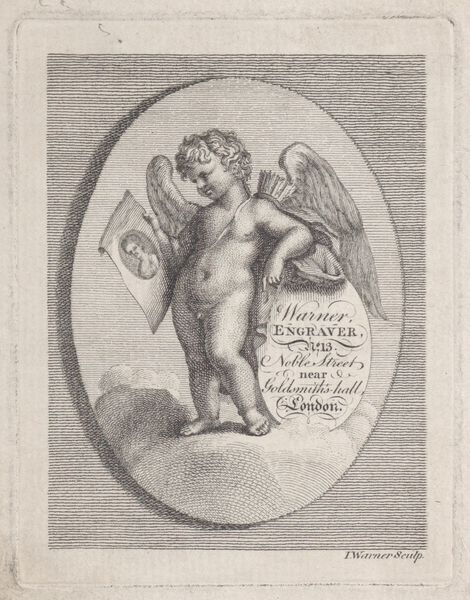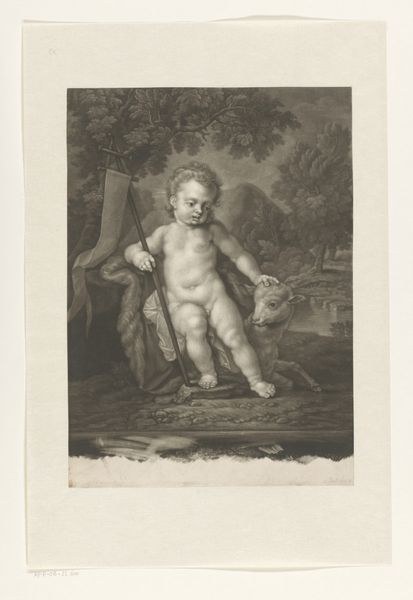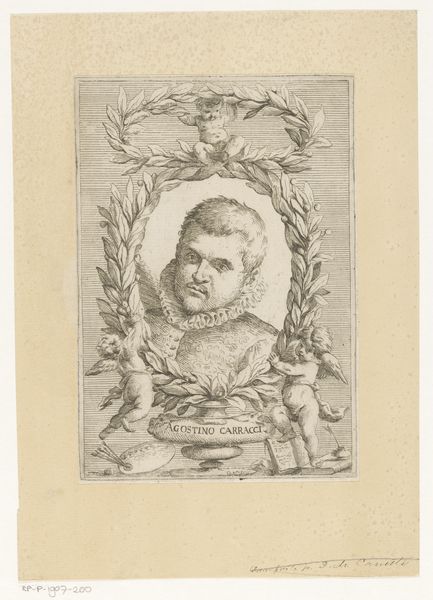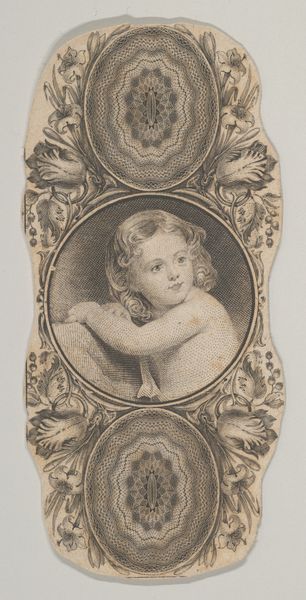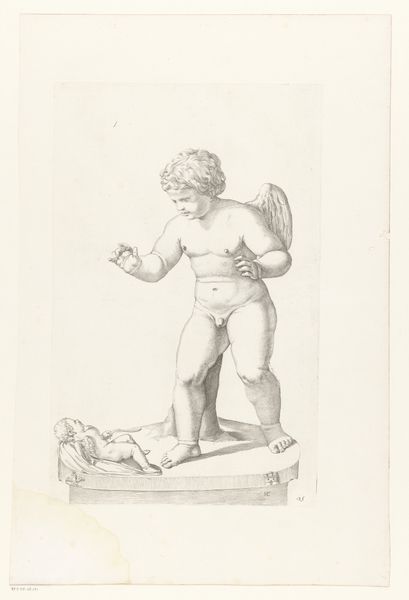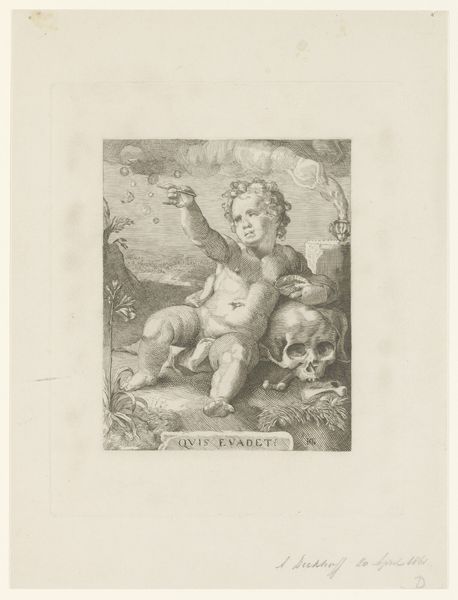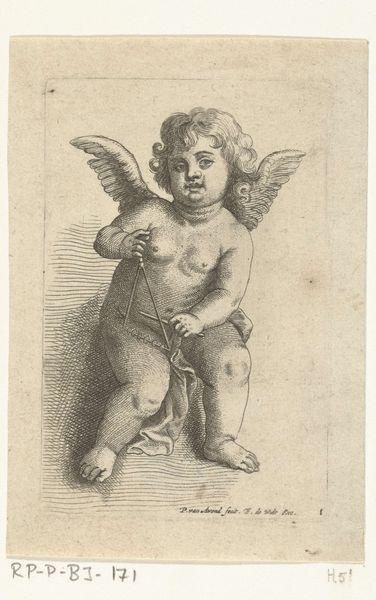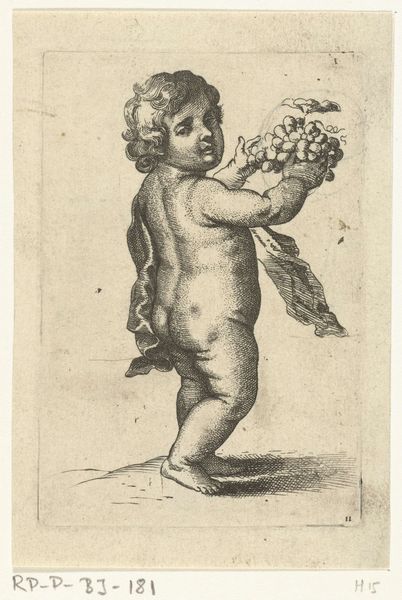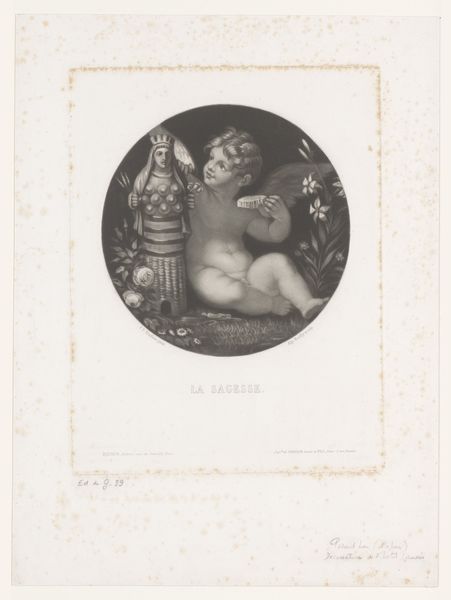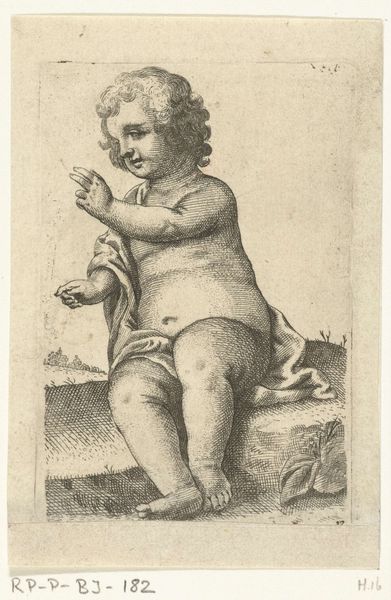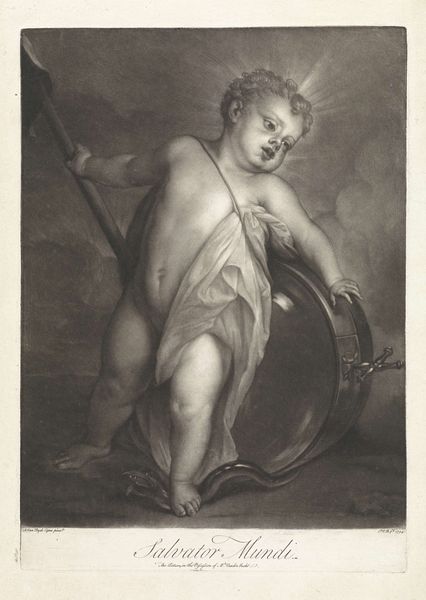
drawing, print, engraving
#
portrait
#
drawing
#
neoclacissism
# print
#
figuration
#
engraving
Dimensions: Sheet: 4 9/16 × 3 3/16 in. (11.6 × 8.1 cm)
Copyright: Public Domain
Editor: This is Francesco Bartolozzi's "Infant Hercules" from 1785, an engraving printed on paper. It strikes me as quite a formal, almost staged depiction of childhood. What social and historical narratives do you see embedded within this seemingly innocent portrait? Curator: That's an insightful starting point. It is important to remember that Neoclassicism wasn't merely an aesthetic preference, but reflected a whole social order and its values. Consider the institutional forces at play. Printmaking made art accessible. Who was consuming these images of idealized strength and virtue, and what role did images play in disseminating the ideologies of the period? Editor: So, you’re saying this image isn’t just a cute baby, but also an expression of the values that certain powerful groups wanted to spread around? Curator: Exactly! The very act of portraying Hercules as an infant speaks volumes. The lion skin and the club are both there, but they serve less as immediate tools than symbols that tell a story and that hint at future glory. Also, notice the oval frame, which suggests a cameo. This draws a connection between this artwork, ancient Roman ideals, and the viewer, whose social aspirations are also considered in a sort of ‘cameo’ by being offered a vicarious association. In whose interest would these visual connections be made? Editor: It makes sense how prints would play an active role, almost as propaganda, to build a system of thinking in which strength and other concepts play an outsized role. And how it seems targeted to a certain kind of elite. Curator: Precisely. These images reinforce the period’s class structure. We should remember that the “Infant Hercules” participated in circulating and solidifying the tastes and interests of an elite audience. How does this impact our contemporary reading? Editor: Wow, I’ll definitely see Neoclassical art with different eyes from now on! Thanks. Curator: Indeed. It's crucial to keep the politics of imagery in mind and examine how institutions and society can mould our perspective, even through something that at first seems purely decorative.
Comments
No comments
Be the first to comment and join the conversation on the ultimate creative platform.
